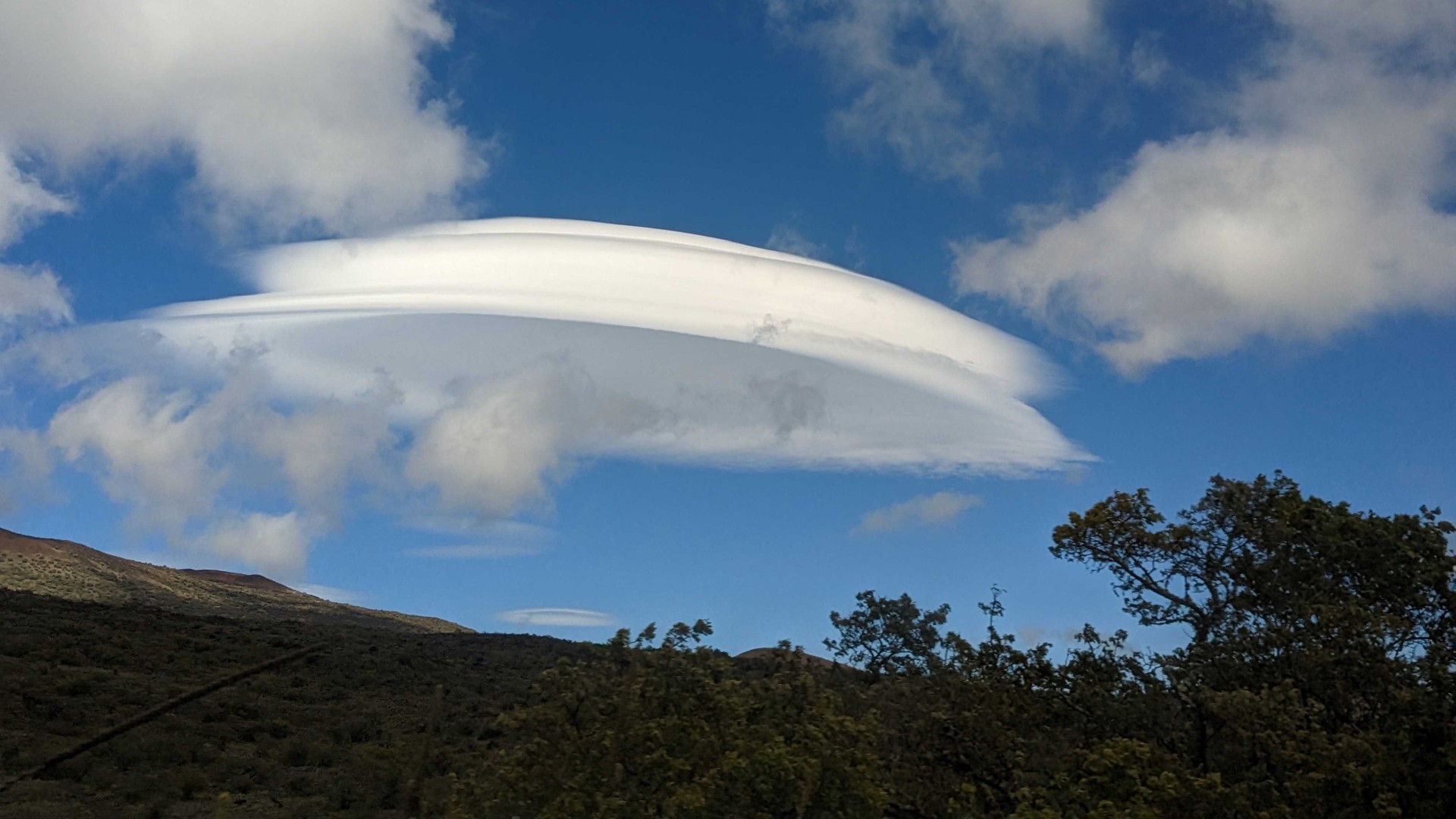Observers spotted saucer-shaped clouds in Hawaiian skies above the Mauna Kea and Mauna Loa volcanoes.

A lenticular cloud photographed from the W. M. Keck Observatory in Hawaii on March 8, 2023. (Image credit: R. Krejci, S. Yeh, A. Surendran, A. Rostopchina/W. M. Keck Observatory)
Observers spotted UFO look-alike clouds in Hawaiian skies above the Mauna Kea and Mauna Loa volcanoes.
The photos were taken on March 8 from the vantage point of the W. M. Keck Observatory, which is located near the summit of the dormant volcano Mauna Kea in Hawaii. The photos capture lenticular clouds, which are usually created downwind of a hill or mountain as strong winds blow over and around rough terrain.
“We spotted some UFOs today! Or rather, their doppelgangers. Check out these stunning photos several Keckies took of flying saucer-shaped lenticular clouds hovering near Maunakea and Mauna Loa. Did you see them too?” the observatory wrote on Twitter(opens in new tab) on March 8.
Lenticular clouds — scientifically known as altocumulus standing lenticularus — generally form in the troposphere, the lowest layer of Earth’s atmosphere, parallel to the wind direction, which gives them their otherworldly appearance.

A lenticular cloud photographed from the W. M. Keck Observatory in Hawaii on March 8, 2023. (Image credit: R. Krejci, S. Yeh, A. Surendran, A. Rostopchina/W. M. Keck Observatory)
These clouds are fairly common over the western half of the mainland due to the Rockies but relatively rare in Hawaii, according to the National Weather Service(opens in new tab).

A lenticular cloud photographed from the W. M. Keck Observatory in Hawaii on March 8, 2023. (Image credit: R. Krejci, S. Yeh, A. Surendran, A. Rostopchina/W. M. Keck Observatory)
These strange looking clouds are sometimes mistaken for UFOs due to their smooth saucer-like shape. They formed near Mauna Loa and Mauna Kea, which reach above 13,000 feet (3,960 meters) in elevation, because strong winds are forced to flow over and around the peaks of the volcanoes. This, in turn, creates waves in the atmosphere just downwind of both of the summits.

A lenticular cloud photographed from the W. M. Keck Observatory in Hawaii on March 8, 2023. (Image credit: R. Krejci, S. Yeh, A. Surendran, A. Rostopchina/W. M. Keck Observatory)
The photos were taken by employees at the observatory, including Rick Krejci, software engineer; Sherry Yeh, staff astronomer; Avinash Surendran, postdoctoral fellow; and Arina Rostopchina, observing assistant.
source: space.com








